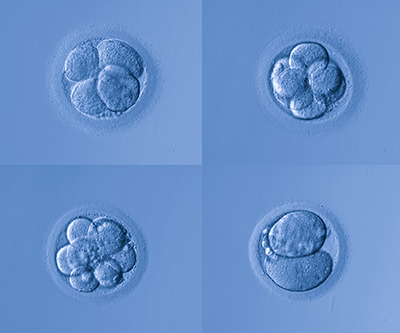
Credit: stock image
Assisted reproductive technology is used to help people conceive. It includes different types of fertility treatments and may use donor eggs, donor sperm, or previously frozen embryos. The Reproductive Endocrinology and Infertility Program conducts research to identify ways to improve assistive reproductive technology and ultimately help people who are trying to conceive.
In one study, the team evaluated the role of endometriosis, a disease that increases a woman’s risk for infertility. Previous studies suggested that women with endometriosis have worse outcomes when undergoing in vitro fertilization (IVF). However, in an analysis of existing data, the team reported that women with endometriosis actually have similar outcomes as other women when frozen embryos called euploid blastocysts are transferred. In this analysis, women with endometriosis did not have different rates of live births compared to other women. These findings will help guide health care professionals when counseling patients in IVF.
In another study, the Reproductive Endocrinology and Infertility Program evaluated whether women who are trying to conceive via sperm donors need the same medications that are typically prescribed to infertile, heterosexual couples. For instance, women undergoing infertility treatments usually receive medication that helps them release more eggs during ovulation. However, researchers don’t know whether this step, called ovarian stimulation, is necessary for the growing number of single or lesbian women seeking to conceive. The study team evaluated existing data on women who were using donor sperm without documented infertility or conditions that may cause infertility. In this context, the researchers found that ovarian stimulation is likely useful for older women but unnecessary for women under age 42 years. According to the study team, the minor benefit of using ovarian stimulation must be balanced by the higher risk for having a multiple pregnancy, for example twins or triplets.
Learn more about the Reproductive Endocrinology & Infertility and Pediatric & Adolescent Gynecology Group: https://www.nichd.nih.gov/about/org/dir/affinity-groups/REI-PAG.
 BACK TO TOP
BACK TO TOP